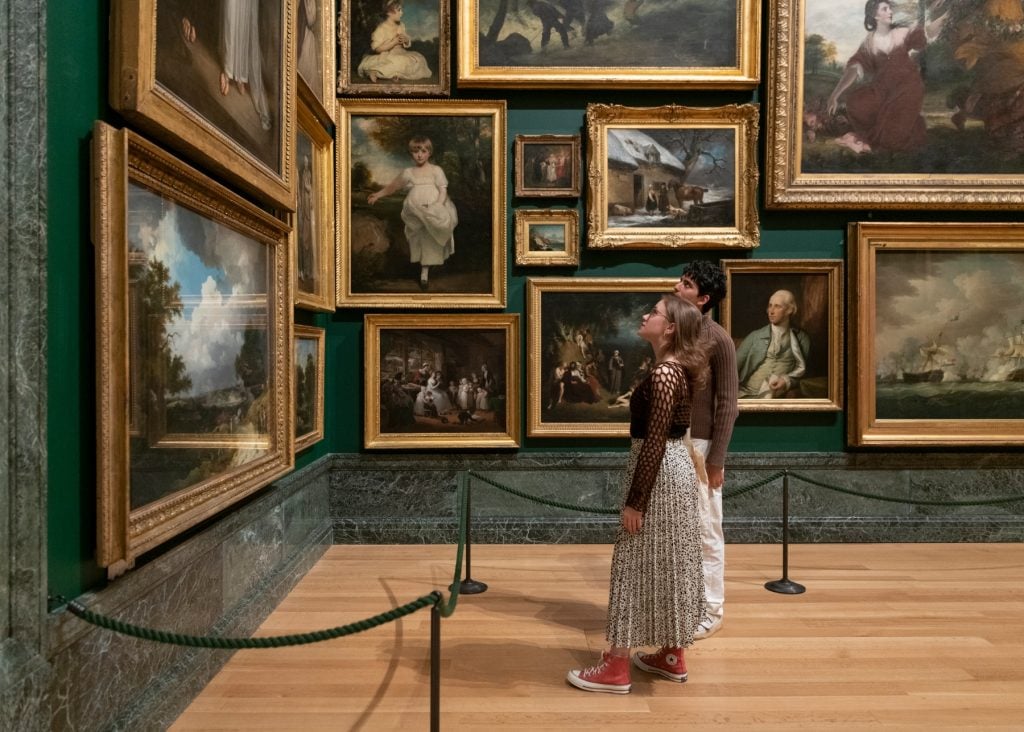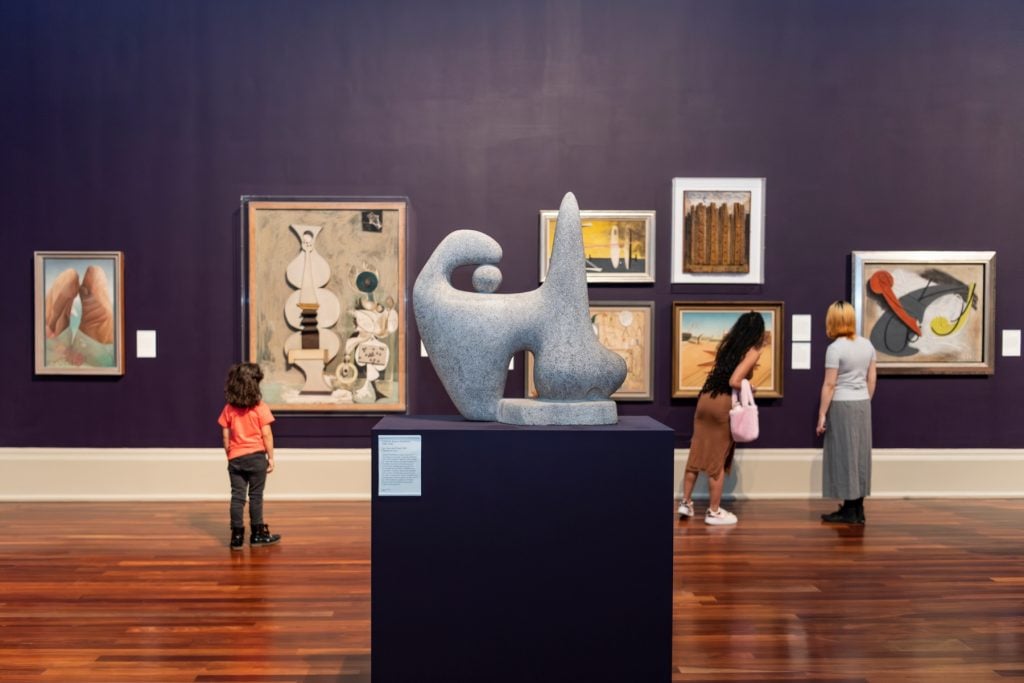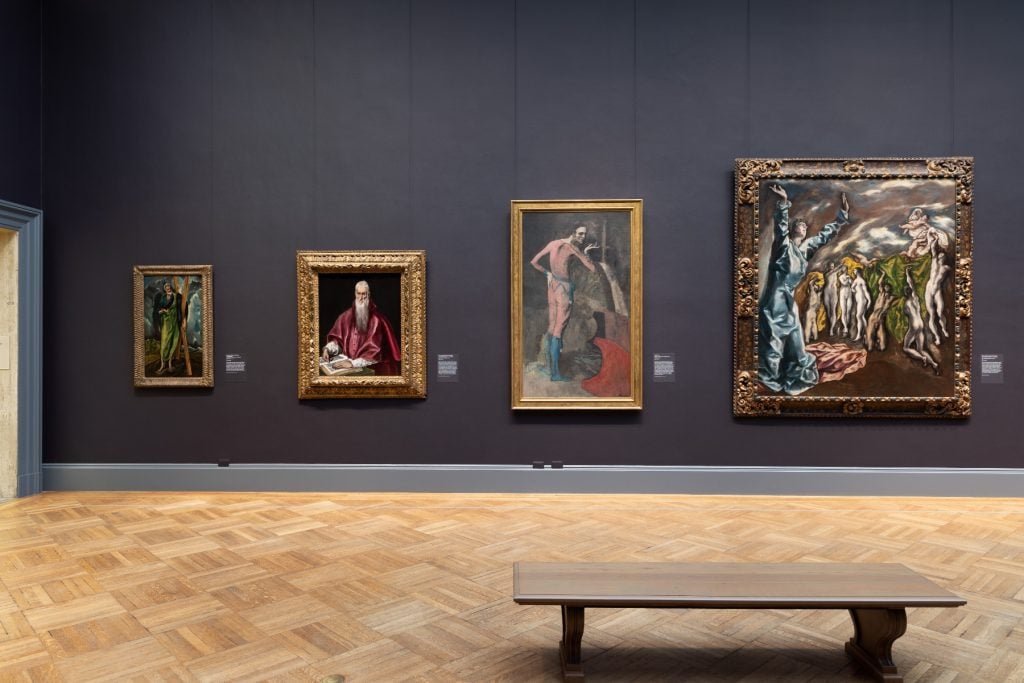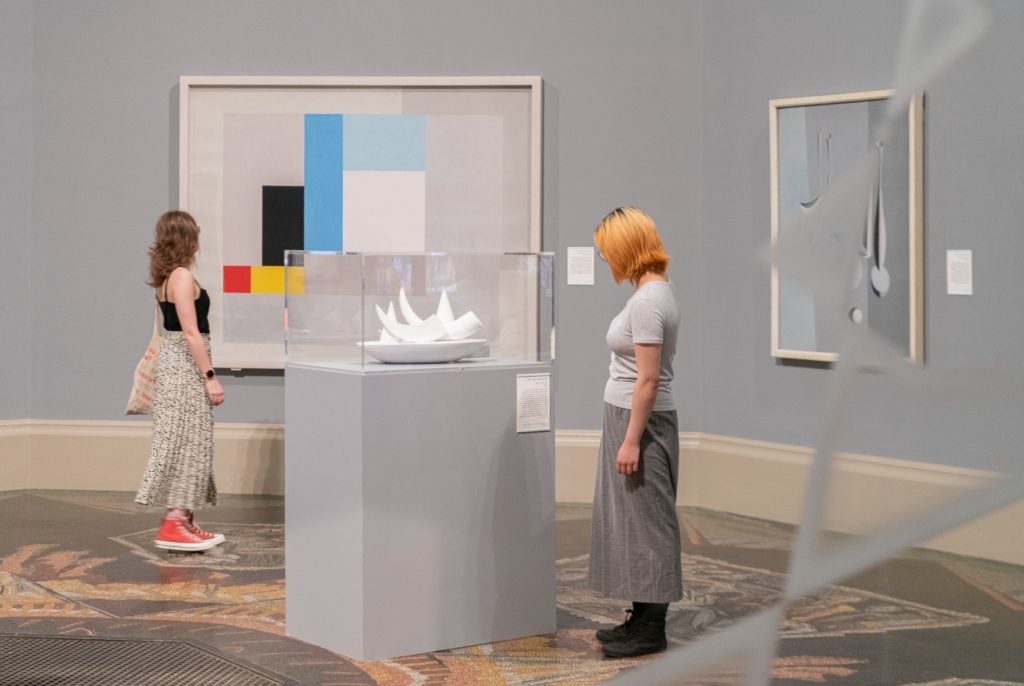Museums & Institutions
Major Museums Are Mixing Old With New as They Reconsider Historical Collections
The Met and Tate Britain are among major international museums to reshuffle their historical paintings of late.

The Met and Tate Britain are among major international museums to reshuffle their historical paintings of late.

Jo Lawson-Tancred

Temporary exhibitions often seem to steal the spotlight, but for some curators the real triumph is reinvigorating a museum’s permanent holdings. With lesser-known gems collecting dust in storage and standout masterpieces getting stuck in outdated narratives, a well-executed rehang can reposition familiar favorites and introduce welcome surprises.
Each time the process is initiated, it raises the question of how radically to reconsider the collection. As the National Gallery in London prepares for its bicentenary, it has announced plans to round off celebrations with a major reshuffle of its grand suites of galleries in May 2025. The contents, pretty much all paintings, date from the late Medieval era up until 1900—a sharp cut-off. Works after this year are entrusted instead to the Tate as part of a decades-long agreement.
Art critic Julian Spalding, the former director of three regional museums in the U.K., is worried that continuing with this approach will inevitably “create a terrible, racist, sexist fossil.”
Spalding expressed these fears in a private letter sent in February to the National Gallery’s director Gabriele Finaldi. He even took the liberty of sending the letter to King Charles, too, arguing that removing the 1900 cut-off could lead to “the renaissance of painting.”
“[The National Gallery’s] founding ambition to collect great paintings as their greatness becomes apparent should immediately be restored,” Spalding said, noting that bringing the collection up to date will also widen the gallery’s representation of female artists and the art of many cultures to better reflect modern Britain.

Tate Britain’s rehang photographed in May 2023. Photo: Madeleine Buddo, © Tate.
“We need a bigger picture of who we are to help us survive,” he said. “We need to appreciate lasting qualities for we’ve got to make our world last. That is why modern art needs to be shown next to older art.”
While the National Gallery is remaining understandably tight-lipped about its plans for 2025, the nature of its collection will certainly determine which kind of stories can feasibly be told. An example from the other end of the spectrum is the Sainsbury Centre in the east of England, which houses a collection reflective of one family’s highly diverse interests. Its relaunch last year put the focus on shared humanity, and it did not shy from having its Henry Moores and Francis Bacons mingle among Tang Dynasty figurines, a Maori flute, and Iputiak ivory snow googles from around 400 C.E.
In contrast to the National Gallery’s relatively tight focus on painting, the Met museum in New York has a particularly sprawling collection that transports visitors from the ancient world to the present day via examples from almost every medium and region imaginable. It debuted its newly installed European Paintings galleries last fall.
“Our European paintings are situated in a context that has threads going in all directions,” said curator Stephan Wolohojian. “How does that allow us to consider the material differently?”
This question led to collaborations with the departments for European sculpture and decorative arts so that relevant objects could be interspersed throughout the rooms. Looking further afield, a portal connecting the galleries with the museum’s American Wing provided an opportunity to explore complex cultural relationships between Spain and the countries it colonized.
Should London’s National Gallery be considering a remix of historical with modern then one instructive example from the Met might be its new grouping of works by Picasso and El Greco. The avant-garde artist’s Blue Period of the early 1900s was heavily inspired by the Spanish Old Master’s prematurely modern paintings of the 16th century, proving that modern art is still evolving out of the reinvention of old references. The ability to bring this to light, thanks to the collections strength in the oeuvres of both artists, is what Wolohojian has dubbed a “Met moment.”

Installation view of “Look Again: European Paintings 1300–1800” (Gallery 600-644) at The Metropolitan Museum of Art, New York photographed November 2023. Photo: Courtesy of The Met.
How to raise contemporary concerns about gender, race, and class, whether anachronistically or not, is usually also a high priority for museums when re-presenting their collections. In some cases, the most powerful riposte has come from giving the floor to contemporary artists. The Met found an avenue to explore topics like race through the paintings of Tiepolo, who recorded Venice in the 18th century as a multicultural meeting place for merchants to trade. The subjects of grand portraits from that period have also had greater scrutiny placed on the sources of their wealth, which is disclosed as part of their biographical context.
A similar effort has been made by Tate Britain, which unveiled a rehang in May last year. It was criticized by some for prioritising politics over art and indulging in excessive hand-wringing over historical wrongs, while others defended the decision to “go woke.” The Times lamented how, with new examinations of the sitter’s connections to the slave trade, “each portrait becomes a ‘wanted’ poster,” distracting the viewer from “thinking about style, taste, literary culture, prints, pleasure, costume, furniture, rooms, relationships, artists, patronage and, you know, painting itself.”
Nevertheless, a series of thematic rooms, including “Metropolis,” “Sensation and Style,” and “Exiles and Dynasties,” introduced new groupings that were considered a triumph. In the latter, the story of contemporary Palestinian-British artist Mona Hatoum is presented alongside the migration to Britain of Anthony Van Dyck and other beloved Dutch portrait painters of the 17th century. Elsewhere, the expressive drawings of William Blake and Chris Ofili are brought into a revelatory conversation with each other. Increased representation of historical women artists spans from Joan Carlile in the 17th century and Angelica Kauffman in the 18th century to more recently significant figures like Gwen John and Vanessa Bell.
If some critics scoffed, footfall from the general public rose by 25 percent in the six months following Tate’s rehang.

Tate Britain’s rehang photographed in May 2023. Photo: Lucy Green, © Tate.
The Met has also tended towards a thematic approach, deliberately eschewing a rigidly geographical framing. Its latest rehang is full of new border crossings that reflect the same winding journeys that many artists took as they moved between different courts. Galleries dedicated to portraiture, for example, bring examples from the Italian and Northern Renaissances face-to-face.
“It’s arresting to see the idealized profiles that are so carefully charted by Pollaiuolo or Filippo Lippi against Hugo van der Goes or Hans Memling and their more real, descriptive depiction of sitters,” explained Wolohojian. “And then there’s this wonderful threshold with Antonello da Messina, who is credited with being a bridge between the north and south.” The artist was an early adopter of oil painting in Italy due to his interest in Netherlandish art, the curator explained.
When it comes to curatorial approaches, it’s not always out with the old. One of the more favorably reviewed aspects of Tate Britain’s rehang was a technique that pulled its audiences back into the past. Andrea Schlieker, director of exhibitions and displays, described how many historical masterpieces were “hung densely from floor to ceiling” in the so-called “Salon style” that emerged during overcrowded annual exhibitions in Paris in the 18th century.
“It really brings to life the sense of competition between these artists, and the newfound urgency for artists to address a wider public at that time,” she said. Three centuries on, the hang remains a winner.